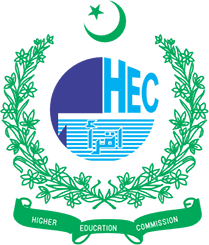GENETIC CHARACTERIZATION OF COTTON GENOTYPES BASED ON MORPHO-PHYSIOLOGICAL, BIOCHEMICAL AND DISEASE-ASSOCIATED TRAITS THROUGH MULTIVARIATE APPROACHES
DOI:
https://doi.org/10.54112/bcsrj.v2023i1.373Keywords:
Net photosynthetic rate, ROXs, Peroxidase, Correlation, Fibre quality, Proline, Ascorbic acidAbstract
Abstract: The first step in creating new crop varieties is to evaluate current germplasm based on agro-morphological, physiological, biochemical, and molecular properties. The recent study compared the key morpho-physiological and biochemical characteristics among ten cotton genotypes. Ten cotton genotypes, including BH-249, BH-617, BH-227, BH-248, BH-613, BH-244, BH-247, BH-606, BH-184, and BH-600 were arranged in triplicates under randomized complete block design (RCBD) with plant-to-plant and bed-to-bed distances of 30 cm and 75 cm, respectively. Data obtained from the mature, fully-guarded plants were subjected to analysis of variance, and the results revealed the presence of significant variations in the studied plant traits. The correlation analysis revealed a significantly positive correlation of cotton yield with the plant height (r = 0.92**), transpiration rate (r = 0.79**), and ascorbic acid (r = 0.64**), while a significantly negative correlation with monopodial branches (r = -0.65**), virus effect plants (r = -0.59) and boll weight (r = -0.50). Similarly, seed cotton yield also showed a positive correlation with the number of bolls (r = 0.55) and peroxidase (r = 0.51), but these correlations were insignificant. Multivariate analysis approaches i.e., principal component, biplot, and cluster analysis, were used to classify and group cotton genotypes based on their performance. These analyses revealed that BH-247 and BH-606 were the most productive cotton genotypes. Therefore, these genotypes could be recommended for cultivation in core-cotton areas following extensive multilocation testing.
Downloads
References
Najib, D.C.S., Fei, C., Dilanchiev, A., & Romaric, S. (2022). Modeling the impact of cotton production on economic development in benin: A technological innovation perspective. Frontiers in Environmental Science, 10, 926350.
USDA. (2022). Cotton: World Markets and Trade, Global Market Analysis, Foreign Agricultural Service, U.S.A.
Ravandi, S. H., & Valizadeh, M. (2011). Properties of fibers and fabrics that contribute to human comfort. In Improving comfort in clothing (pp. 61-78). Woodhead Publishing.
Glin, L. C. (2014). Governance of global organic agro-food networks from Africa. Wageningen University and Research.
Fletcher, K. (2013). Sustainable fashion and textiles: design journeys. Routledge.
ESP (2022). Economic Survey of Pakistan. 2021-22, Ministry of Finance, Govt. of Pakistan. Available online at Accessed on April 3, 2023. https://www.finance.gov.pk/survey/chapters_21/02-Agriculture.pdf
Steel, R. G. D., Torrie, J. H. and Dickey, D. A. (1997). Principles and Procedures of Statistics: A Biometrical Approach, 3rd Ed. McGraw Hill Book Co., New York.
Sneath, P. H. A. and Sokal, R. R. (1973). Numerical Taxonomy: The Principles and practice of numerical classification. Free-Man WF and Co, San Francisco, USA.
Bhatti, M.H., Yousaf, M.I., Ghani, A., Arshad, M., Shehzad, A., Mumtaz, A., Khalid, M.U., Khalid, M.Z., Mushtaq, M.Z., and Shah, S.A.S. (2020a). Assessment of genetic variability and traits association in upland cotton (Gossypium hirsutum L.). International Journal of Botany Studies 5(2),148-151.
Bhatti, M.H., Yousaf, M.I., Munir, M., Khan, M.N. Hussain, D., Akbar, W., Hafeez, M.A., Kohli, S.A., Khalid, M.U., and Abdullah, M. (2020b). Genetic Variation and Association Among Upland Cotton Genotypes Under Semi-Arid Conditions. International Journal of Biology and Biotechnology 17(4), 693-699.
Aslam, M.Z., Sajjad, M.H., Yousaf, M.I., Hussain, S., Shah, S.A.S., Bhatti, M.H., Hussain, S., Ghani, A., Ibrar, I., Akram, M., Razaq, A., Mehboob, A., Akhter, S., Zafar, A., Akhtar, I., and Shah, S.W.H. (2022). Impact of heat-stress on agro-morphometric and fiber-related traits in indigenous upland cotton genotypes under semi-arid. Biological and Clinical Science Research Journal 95
Hussain, S., Aslam, M., Yousaf, M., Iqbal, J., Bukhari, M., Ali, F., Ashfaq M, Qamar M. J., Farooq, M. R., Hafeez, Z., Akhtar, I. and Shah, S. 2023. Quantitative Effects of Heat Stress on Fiber-Related and Agronomically Important Parameters in Cotton (Gossypium hirsutum L.). Biological and Clinical Sciences Research Journal 4(1): 210-210.
Yousaf, M.I., Hussain, Q., Alwahibi, M.S., Aslam, M.Z., Khalid, M.Z., Hussain, S., Zafar, A., Shah, S.A.S., Abbasi, A.M., Mehboob, A. and Riaz, M.W. (2023). Impact of heat stress on agro-morphological, physio-chemical and fiber-related parameters in upland cotton (Gossypium hirsutum L.) genotypes. Journal of King Saud University-Science 35(1), p.102379.
Hasanuzzaman, M., Raihan, M. R. H., Masud, A. A. C., Rahman, K., Nowroz, F., Rahman, M., and Fujita, M. (2021). Regulation of reactive oxygen species and antioxidant defense in plants under salinity. International Journal of Molecular Sciences 22(17), 9326.
Alabady, M. S., Youn, E., and Wilkins, T. A. (2008). Double feature selection and cluster analyses in the mining of microarray data from cotton. BMC Genomics 9, 1-11.
Sarwar, G., Nazir, A., Rizwan, M., Shahzadi, E., and Mahmood, A. (2021). Genetic diversity among cotton genotypes for earliness, yield and fiber quality traits using correlation, principal component and cluster analyses. Sarhad Journal of Agriculture 37(1), 307-314.
Westhues, C. C., Mahone, G. S., da Silva, S., Thorwarth, P., Schmidt, M., Richter, J. C., ... & Beissinger, T. M. (2021). Prediction of maize phenotypic traits with genomic and environmental predictors using gradient boosting frameworks. Frontiers in plant science, 12, 699589.
Bhandari, H. R., Bhanu, A. N., Srivastava, K., Singh, M. N., & Shreya, H. A. (2017). Assessment of genetic diversity in crop plants-an overview. Adv. Plants Agric. Res, 7(3), 279-286.
Lever, J., Krzywinski, M., & Altman, N. (2017). Points of significance: Principal component analysis. Nature methods, 14(7), 641-643.
van Dijk, A. D. J., Kootstra, G., Kruijer, W., & de Ridder, D. (2021). Machine learning in plant science and plant breeding. Iscience, 24(1).
Isong, A., Balu, P. A., & Ramakrishnan, P. (2017). Association and principal component analysis of yield and its components in cultivated cotton. Electronic Journal of Plant Breeding 8(3), 857-864.
Sarwar, G., Nazir, A., Shahzadi, E., & Mahmood, A. (2020). Assessment of genetic diversity in cotton genotypes for earliness, CLCuV disease tolerance, fiber quality and yield related traits. Journal of Agricultural Research 58(3), 165-170.
Downloads
Published
How to Cite
Issue
Section
License
Copyright (c) 2023 S HUSSAIN , MZ ASLAM , MJ QAMAR, MR FAROOQ , G MURTAZA , M SAJJAD , NH FATIMA , M ZUBAIR , SWH SHAH , I IBRAR, Z HAFEEZ , F ALI, M ASHFAQ, I AHMAD , MI YOUSAF

This work is licensed under a Creative Commons Attribution-NonCommercial 4.0 International License.








